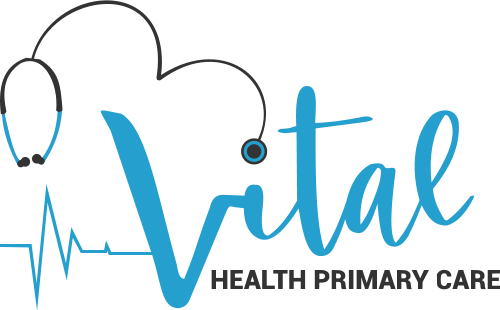Heart disease is a leading cause of death in both men and women and affects people of all races, socioeconomic statuses, and walks of life. In fact, heart disease is the number one cause of death for both men and women. Women are at greater risk for developing heart disease than men because they have a slower rate of recovery if they have this condition; however, both genders experience similar symptoms at the first onset.
1 in 3 women will develop heart disease in their lifetime.
One in three women will develop heart disease in her lifetime. Heart disease is the number one killer of women, claiming about half a million lives each year and accounting for one out of every four deaths globally.1 It’s also the leading cause of death for women worldwide—a staggering statistic that, if you think about it, shouldn’t come as much surprise when we take into account that heart disease kills more people than all forms of cancer combined (1).
Heart disease has been found to be caused by factors such as high cholesterol levels, smoking cigarettes, and lack of exercise. These risk factors can be managed through lifestyle changes such as eating healthy foods and getting enough exercise every day—and knowing how common these conditions are among women can help you stay on track!
Heart disease is the number one cause of death for both men and women.
Heart disease is the number one cause of death in the United States, and it’s also the leading cause of disability for both men and women. Heart disease affects more than 1 million Americans each year, killing about 350,000 people annually. Overall, heart attacks are responsible for more deaths than all cancers combined—and they happen to be the No. 1 killer among women as well!
A healthy heart means a healthy mind, body, and spirit—and vice versa.
Heart disease is a serious condition that can affect your quality of life. Having a healthy heart means you’ll be able to live a full and active life, with no limitations on how far or how fast you want to go. But if you have heart disease, it may cause symptoms that make it difficult for you to enjoy good health—and these symptoms can make life more difficult than necessary.
Heart attacks don’t happen in isolation; they’re part of an overall pattern of the illness called heart failure or cardiomyopathy (the medical term for weakened hearts). When this happens over time, your body begins to lose its ability to pump blood efficiently through your circulatory system—and this leads directly into one of two things: either chronic stress (which causes inflammation) or high cholesterol levels (which block arteries). This puts strain on many organs throughout the body including those involved in digestion and sexual function as well as mental functioning like memory retention & recall which makes sense since how well we think about ourselves affects our lives every day!
Heart disease is a spectrum and that spectrum may be difficult for you or your loved one to determine.
Heart disease is a spectrum of diseases, each with its own risk factors and outcomes. It can happen at any age, but it’s important to know your risk factors so you can take steps to prevent heart disease or if you already have it, monitor closely so you can get the best treatment possible.
Heart disease affects women differently than men because our bodies are different: Women have smaller hearts than men do. We also tend to live longer with this condition—and so there are more years between diagnosis and death from heart failure (the most common form of heart failure).
Women are at greater risk for developing heart disease than men.
The good news is that women are more likely to have high blood pressure, cholesterol, and diabetes. They may also be overweight or obese. And if you’ve got a family history of heart disease, it’s likely your risk will be higher than someone who doesn’t share those traits with you. But don’t let this discourage you! Heart disease affects both genders equally in terms of age at diagnosis (about 60% of cases), the mortality rate (between 30-50%), and the number of years lived with a disabling heart condition after diagnosis (3% lifetime).
Women have a slower rate of recovery if they have heart disease.
Women have a slower rate of recovery if they have heart disease.
Women are more likely to have heart disease than men, and women who develop it tend to experience a slower rate of recovery from the condition. This can be because the female body may be less able to repair itself after an injury or other illness, or because women are more likely to develop certain types of atherosclerosis (the buildup of fatty substances in the arteries) that makes it difficult for them to recover from what would otherwise be minor problems with their hearts.
Cardiovascular disease continues to have the highest mortality rates among all major diseases.
Cardiovascular disease continues to have the highest mortality rates among all major diseases. According to the American Heart Association, cardiovascular disease is a broad term that includes heart disease and stroke. It can affect people of all ages and genders, but it’s more prevalent among older adults due to their greater likelihood of developing other chronic conditions such as diabetes or hypertension (high blood pressure).
The good news is that you can take steps now to reduce your risk of developing cardiovascular disease later in life by making healthy lifestyle choices now!
Understanding your own and your loved one’s risk factors can help you identify symptoms and make changes that can help prevent future episodes.
While there’s no one-size-fits-all plan for protecting your heart, here are some ways you can help protect yourself and your loved ones from the risk of cardiovascular disease:
- Reduce stress. Stress can wreak havoc on your body’s ability to regulate blood pressure and cholesterol levels, both of which are major causes of heart attacks and strokes.
- Eat a healthy diet. Eating plenty of fruits, vegetables, and whole grains—as well as limiting sodium (salt) intake—can help reduce inflammation in the arteries that lead to atherosclerosis, an inflammatory disease that damages arteries over time.[1]
- Exercise regularly. Regular exercise helps keep weight off while also helping maintain muscle mass; this keeps blood flowing smoothly through more areas within our bodies without becoming blocked by plaque buildup or constricting vessels like those responsible for delivering oxygenated blood throughout our bodies.[2] It also improves overall fitness levels so we’re less likely to develop serious health problems later down the road if we continue exercising regularly during adulthood (or even as children).
- Quit smoking cigarettes completely before trying any other methods listed below because quitting smoking early on will allow you time enough after quitting cigarettes that you can start exercising regularly again without having any obstructions caused by nicotine withdrawal symptoms such as cravings/losses of interest level etc…..
Learn more about heart disease so you can take steps to prevent it or if you have it, monitor closely so you can get the best treatment possible.
- Learn more about heart disease so you can take steps to prevent it or if you have it, monitor closely so you can get the best treatment possible.
- Identify risk factors for heart disease by understanding your family history and lifestyle choices. These include:
- Smoking cigarettes
- High cholesterol (hypercholesterolemia)
- High blood pressure (hypertension)
Conclusion
Women and heart disease, it’s a topics that many of us think about but don’t talk about often. But the reality is that women have a much higher risk of developing heart disease than men do—and we need to start paying more attention to this potential epidemic. The good news? We can all take steps today to protect ourselves from heart problems in the future!



